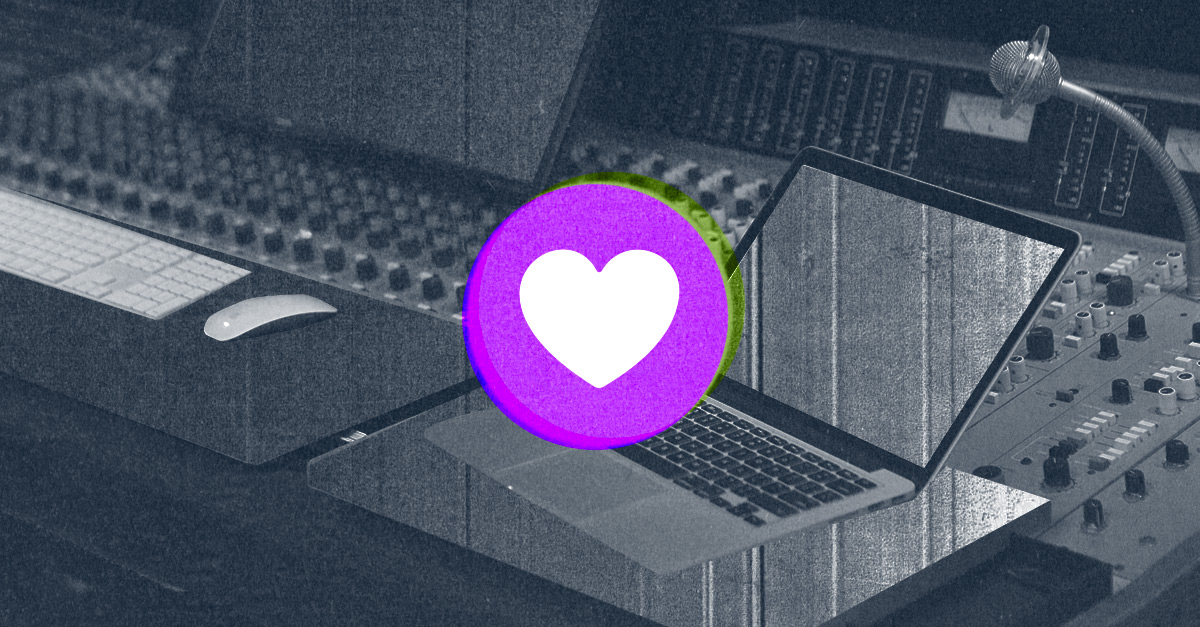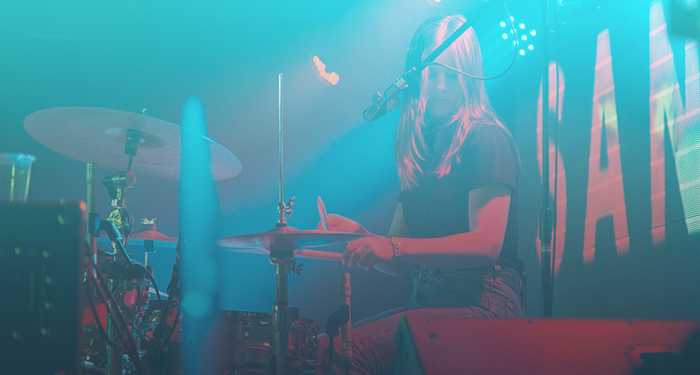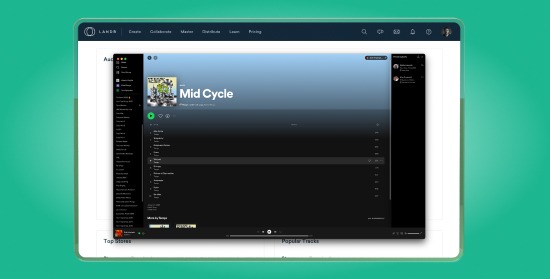
5 Social Media Metrics Musicians Think About All Wrong

Metrics for musicians.
It’s a phrase that’s becoming more and more important in music promotion. And for good reason.
In a recent poll, NME ranked social media (26%) just behind playing live (51%) as the most important channel for musicians looking to get their music heard.
Today you have all sorts of numbers flying at you: likes, shares, listens, plays, streams, royalties and mentions. It can all seem pretty hollow when you’re trying to stay inspired and dedicated to producing your best work.
But it got me thinking, “After I share my music, what now? What metrics actually matter? And who’s really listening?”
To make sure you don’t get blinded by all the noise of social media—and the numbers that come with it, I decided to unpack the 5 most important metrics and find out what they really mean for independent music (hint: it’s not the numbers, it’s what’s behind them that counts).
Understand your metrics, track your following and make the connections that really matter for building a healthy and happy fanbase.
1. Likes

So your music is finally done! You take the plunge and share it to socials. Great, people start liking your track on social media! The thumb is getting sore from thumbing so much!
Likes are great. They’re a perfect starting point for tracking your success…
But the question you need to be asking is WHO liked your track and why?
Use your likes to get to know your audience, start a discussion in the comments about your process, discuss parts you weren’t feeling great about and parts that you were really happy with, link to your influences and inspirations and ask for feedback!
It all helps to build a story around your track and add value to the plays that you’re getting.
Nothing is better than a real honest exchange, digital, or real life. Likes should be a starting point for building a relationship with your fans, not the endgame that you obsess about too much.
Hot Tip: When you’re sharing your releases to social, ask a question in your post. It’s a great way to get your fans involved and encourage discussion around your tracks. It also shows that you care about your following’s opinion.
Explore who’s listening by checking your likes. You might even be surprised at who’s supporting your music. Are they also musicians? Why not listen to their track in exchange and give a like back. Or better yet, drop them a DM and connect. That way you build a relationship of mutual support, and you encourage people to continue following and liking you.
Nothing is better than a real honest exchange, digital, or real life. Likes should be a starting point for building a relationship with your fans, not the endgame that you obsess about too much. Build your likes, but use them once you have them for developing your fanbase.
2. Shares
Sharing is caring. The same goes for your music. If people share it, it means they’re doing more than scrolling through their feed and liking something distractedly or out of obligation.
[adbutler zone_id=”291816″ secure=”1″ type=”asyncjs”]
When something comes from the heart, people see it and want to share it further. When you’re crafting your social post, tell some of your story. Why are you happy to share your release? Was it the product of months of hard work, with the precious help of many collaborators? Include some of that in your post.
Hot Tip: When you make a social post, tag everyone that is credited on your album—the vocalists, each band member, the mixing engineer, producer, the designer of the album art and anyone else involved. It’s a nice way to say thank you, and increase the chances of having them share your release too.
3. Streams
So you just distributed your track. You’re nervously checking your stats every hour in hoping your stream count go up.
Trust me, I’ve been there too. Whatever you do, don’t let it become an obsession! Stressing about stream stats can distract you from understanding the bigger picture.
Of course, if a song is made and you don’t let people know, you’ll miss out on most of your streams. Any release needs a promotional campaign on social media. Post about it on Facebook and Twitter. Make a fun Instagram story about it.
Stats aren’t the end game—they’re a starting point for discovering your audience. Use them to guide your decisions and connect better.
The total number of streams may seem like the only metric that matters but there are other important factors at play on streaming platforms.
Your track’s position in Spotify’s recommendation algorithms isn’t determined by number of plays alone.
Your ratio of plays to user library saves is important, as well as how many followers your artist profile has.
These two lesser known metrics can help evaluate how engaged your audience is with your music. They’re essential to working your way up to Spotify’s editorial playlists.
But think about what those streams tell you about the listeners behind them. Check in a day, a week, a month or even a year to get the full picture of your releases streams. Ask yourself: where do my streams come from, what countries and cities? How can I reach out to those areas? Here are some ideas:
- Reach out to a blog from a region where your music is getting streamed to feature your music
- Reach out to a local radio station
- Write to fellow musicians you admire in those areas
- Book an out of town show
Even though music has no boundaries these days, the humans who listen to it live in specific places. Those are the places where you’re gonna want to focus your resources. Stats aren’t the end game—they’re a starting point for discovering your audience. Use them to guide your decisions and connect better.
4. Subscriptions
Aside from your social media, there’s another fantastic tool to get in touch with your fans: a mailing list. Mailing lists let you turn one-time listeners into long time fans.
They’ve been around forever. Many bands used to post a form at their merch table at shows to give fans the option to stay in touch. Newsletters have since gone digital, but the benefit is still there for staying connected.
Services like Mailchimp or Bandzoogle let you capture and manage your contacts and send out quick and simple newsletters direct to your fans.
Your mailing list is an effective communication tool, especially at a time when social media feeds are overcrowded. Your newsletter is a space that’s all your own.
A casual fan on social media becomes a longterm supporter when you give them the option of signing up to your mailing list.
Subscriptions are a sign of trust. If someone gives you their email, they trust you to use it well. It means they’re paying attention and they want to stay updated about your music. So subscribers is one of the most important metrics to target. Every subscriber is not just a listener, but a true fan who is interested enough in your music to let you into their everyday lives—pretty powerful when you think about it…
It’s your chance to send personalized, honest, interesting content to a receptive audience—like a photo essay from your last tour, your upcoming shows, your radio appearances, your releases, press about you, your merch (also a great place to offer discounts), etc.
Add your newsletter signup link when you share newly released music or in your social media bios.
A casual fan on social media becomes a longterm supporter when you give them the option of signing up to your mailing list. So your subscriptions stats going up are a great sign that you’re doing it right.
5. Your Inbox

The most important connection you can make with your fans is meaningful one-on-one interactions. So messages in your inbox is another important metric. Treat each on like a connections that could open doors to opportunity.
Think about it: a direct message means that a fan, blogger, or booker:
- Likes your project enough to take the time out of their busy schedule to message you directly.
- Views you and your music as approachable and honest.
- Wants to dig deeper into your music and learn more about something that’s intrigued them.
It’s a very human response when so many things in music today can seem cold and lifeless.
Make yourself available to your fans and community by posting your artist email on your social profiles or when sharing a new release to your social media pages (fan mail starts with fans knowing where to send it!).
The most important connection you can make with your fans is meaningful one-on-one interactions.
Respond as quickly as you can and make every encounter as wholesome as possible. One genuine interaction with someone that’s interested in your music can make heaps of difference when most music industry emails or direct messages are forgotten. It’s the little things that add up over time.
Having your contact info out in the open shows that you are approachable and makes people more inclined to get in touch with you. Which means potential invites to make a guest mix, appear on a radio show, or even release on a label. You’ll never know unless you’re available.
If people write to you make a point of personally responding to each message. Set a good precedent by being a nice person (what a concept!). Make it what makes YOU stand out.
Metric system
Every social metric counts towards your big picture. Don’t obsess over specifics like boosting your plays or your likes.
Look at all your social sharing and platforms as part of a bigger goal: Building a following of dedicated and engaged fans that feel a personal connection with you and your music.
Behind every stream, like or play there’s a human being. Use your online promotion tools and platforms to do everything you can to be a human back.
Gear guides, tips, tutorials, inspiration and more—delivered weekly.
Keep up with the LANDR Blog.



